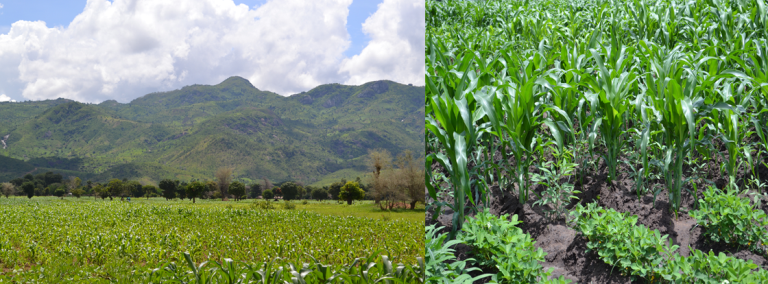N and P cycling within soil aggregate fractions in maize-pigeonpea intercropping systems of Malawi
Summary
This project will be assessing the ability of a maize-pigeon pea intercropping system to access typically unavailable phosphorus pools in order to sustainably increase maize yields for subsistence farmers in Malawi. It will also compare crop production, soil fertility accumulation, and N and P nutrient cycling within soil aggregates between maize-pigeon pea intercrops and sole cropped maize in order to elucidate the mechanisms involved with nutrient transfer between pigeon pea and maize.
Detailed Summary
Due to overall poor soil quality, lack of inputs, and an unstable, changing climate, subsistence farmers in Malawi have suffered from steadily declining crop yields over the past several years. In Malawi, maize is the primary food source, so our focus is on increasing maize production through low cost and easy to replicate methods. One method that farmers have employed for decades is the intercropping of maize with legumes. Legumes fix their own N, thus providing a fertilizer source after decomposition.
Another nutrient that is plentiful in the soil, yet largely unavailable to crops in these highly weathered soils is P. Preliminary studies have indicated that pigeon pea, a protein-rich legume commonly grown in Malawi, has the ability to access soil P pools that are typically unavailable to other crops, such as maize. The main questions to be addressed are where in the soil profile this P is being accessed from, which P pool(s) it belongs to, and how it is transferred from pigeon pea to maize. This project will thus compare crop production, soil fertility accumulation, and N and P nutrient cycling between maize-pigeon pea intercrops and sole cropped maize in order to elucidate the mechanisms involved with nutrient transfer between pigeon pea and maize. The specific objectives are to:
- Develop a novel P fractionation method integrating both physical and chemical fractionation in order to identify P pools sensitive to agricultural management.
- Measure the quantity and specific activity of P taken up by maize and pigeon pea under different root barrier techniques in order to determine the ability of each plant to take up P mineralized by pigeon pea within the current growing season.
- Measure available, microbial, organic, and total C, N, and P of bulk soil and aggregates of maize-pigeon pea intercrops to determine which P pools the pigeon pea is accessing.
- Determine the effect of crop residue C, N, and P content on P dynamics within soil aggregates and soil P pools, as well as on subsequent P uptake in maize.
- Compare grain yields and nutrient content in sole maize versus pigeon pea-maize intercropping systems.
For further information please contact Johan Six ().


